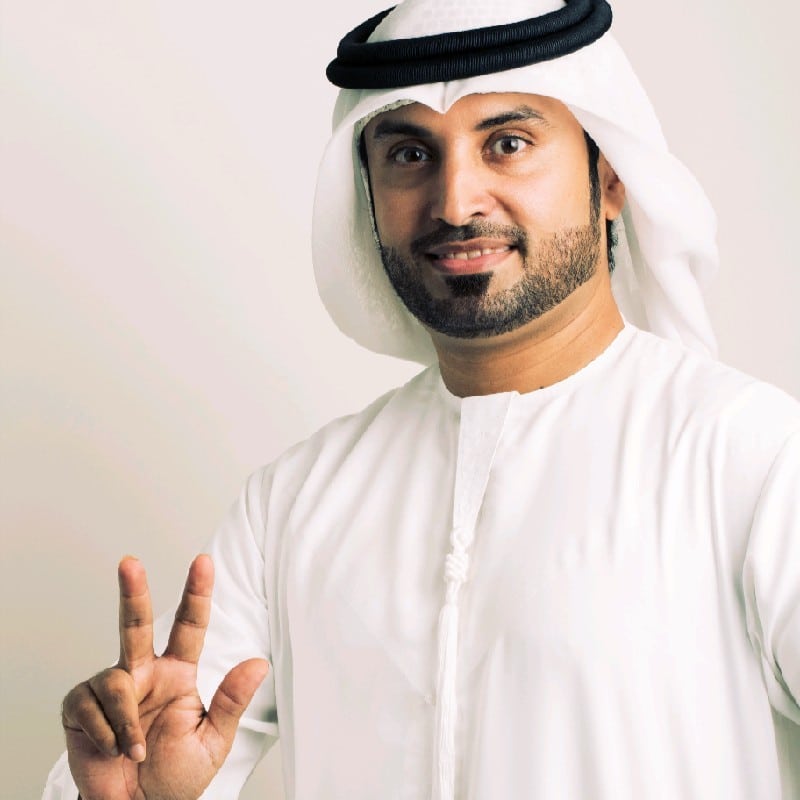Blockchain projects in MENA region depend on its fusion with RWA | Opinion

Disclosure: The views and opinions expressed here belong solely to the author and do not represent the views and opinions of crypto.news’ editorial.
Blockchain technology is almost synonymous with cryptocurrencies. It’s undeniable that blockchain adoption would’ve never reached its current state without Satoshi’s Bitcoin (BTC), even though the blockchain concept is almost three decades old.
While cryptocurrencies like Bitcoin dominate headlines, the broader potential of blockchain in facilitating secure, decentralized data processing in real-world scenarios is equally groundbreaking. Imagine a supply chain operating with unparalleled transparency and efficiency or a voting system where each vote is indelibly and anonymously recorded, all thanks to blockchain. These scenarios aren’t distant dreams, and many countries globally are attempting to implement blockchain in their processes; they represent the immense practical potential of blockchain when implemented in tangible, everyday scenarios.
So, how will this shift shape the future of blockchain? What real-world applications are the most promising for the countries in the Middle East and North Africa (MENA)? And what are the current challenges for these developments?
Blockchain’s expansion beyond transactions
Ethereum is a perfect example of how blockchain projects shift from mere transactions to more tangible applications. The Ethereum network has evolved from a conventional cryptocurrency to a platform for decentralized applications and smart contracts. Projects like Decentraland and MakerDAO exemplify this transition, moving blockchain from a concept to a concrete, trust-building technology.
Notably, notable companies utilize blockchain technology to manage intellectual property rights and automate royalty payments. For example, Ernst & Young (EY) and Microsoft developed a blockchain solution for content rights and royalties management in the gaming industry.
In addition to these services, blockchain is making strides in other traditional sectors. Several recent research studies in healthcare have demonstrated how patient data can be managed more securely and efficiently, while collaborations in travel and wellness have highlighted blockchain’s versatility. The key to this transformation lies in understanding blockchain’s core strengths: decentralized control, immutability, and transparency.
When leveraged beyond digital currencies, these strengths can address some of the most pressing challenges in various sectors. For example, the UAE Roads and Transport Authority (RTA) is working on a project to create a vehicle lifecycle management system using blockchain technology. The project aims to provide car manufacturers, dealers, regulators, insurance companies, buyers, sellers, and garages with a transparent vehicle history record from the manufacturer to the scrap yard.
Such applications prove blockchain’s adaptability and potential to improve interactions and experiences across various industries significantly. It shows that blockchain’s versatility has an actual tangible value beyond monetary transactions.
Strategies for real-world integration
The blockchain’s journey from a niche technology to a mainstream tool necessitates strategic integration with traditional industries. For blockchain to truly take root in the real world, it must be introduced as a practical technology.
One key strategy is collaboration. Blockchain projects can gain the necessary insights and expertise to tailor their solutions to real-world needs and challenges by partnering with established industries. The partnership between HAQQ and GoMeat demonstrates this: HAQQ is providing a blockchain infrastructure for GoMeat’s delivery platform to transform the traditional halal meat market, widen the distribution network of local vendors, and make the products more accessible to the respective communities. These projects illustrate how blockchain can enhance everyday customer experience for diverse communities and consumer segments.
In the healthcare sector, Polygon Network partnered with MSP Recovery to develop LifeChain, a blockchain-based healthcare claims platform. Traditional banks like Citibank and JPMorgan integrated blockchain tech into their financial services, including FOREX. Many banks in the UAE are working on their solutions based on blockchain technology, e.g., Emirates Islamic, Emirates NBD, Commercial Bank of Dubai, Abu Dhabi Commercial Bank, HSBC, RAKBANK, and Mashreq Bank, as well as Dubai Economy and DIFC.
Another approach is integrating real-world assets into the blockchain as digital tokens, representing real-world assets (RWA) like currencies, commodities, equities, and bonds. This integration enables these assets to become part of the decentralized finance ecosystem, enhancing access to financial tools that are often out of reach. Doing so opens up new horizons for applications and allows individuals with smaller capital to gain access to these valuable assets.
However, the challenge extends beyond just integrating the technology; it’s more about making it accessible and understandable to the average user. User-friendly interfaces, streamlined transaction procedures, and comprehensive educational resources are crucial in bridging the gap between the complex nature of blockchain technology and its practical application. It’s about creating systems that people can easily use and implicitly trust.
What’s hindering blockchain adoption?
While integrating blockchain into various industries is promising, it has a fair share of challenges. Scalability, regulatory hurdles, and complex UX are significant barriers to blockchain’s achieving widespread adoption.
Scalability remains a primary concern. As blockchain applications grow, the technology must be able to handle increased transaction volumes without compromising speed or security. Developers are addressing this issue by enhancing blockchain architecture with Layer-2 solutions and sharding techniques.
Regulatory challenges are also significant. The decentralized nature of blockchain poses a conundrum for traditional regulatory frameworks. Finding a balance between implementation and regulation is crucial for protecting consumers and fostering technological advancement.
User experience is another critical area. The first generation of banking apps saw limited adoption, as their initial complexity didn’t appeal to all users. It was only when these apps became more user-friendly and banks effectively communicated their benefits that widespread adoption occurred. Similarly, for blockchain applications to achieve mass adoption, they, too, must follow a path of increased accessibility. Simplifying interfaces and improving the overall user experience are essential to making blockchain technology more approachable for everyday users.
Reflecting on blockchain’s future
The journey from a digital ledger to a next-gen transformative tool for various industries hinges on blockchain’s integration with real-world applications. The only way to achieve mass technology adoption is by consistently testing markets for real-world applications, which we are currently witnessing in the MENA region.
Imposing it from the top or relying solely on visionary perspectives isn’t enough. Users must love the final product for technology widespread, just as they love MidJourney or stETH. Blockchain projects must evolve beyond their digital origins to find practical applications in the real world, thus proving their value beyond mere transactions or speculative assets.












